Student loan debt can be overwhelming, especially for those who work in public service. However, there is a program that offers financial relief specifically for public service workers – the Public Service Loan Forgiveness (PSLF) Program.
This program was created to help alleviate the financial strain of student loans for individuals who dedicate their careers to serving their communities and the public. In this blog post, we will provide an overview of the PSLF Program, discuss its benefits for public service workers, and provide examples of qualifying employers.
Public Service Loan Forgiveness Program
The Public Service Loan Forgiveness (PSLF) Program was established in 2007 as part of the College Cost Reduction and Access Act. Its primary goal is to provide loan forgiveness to individuals who work in public service jobs and make 120 qualifying payments towards their federal student loans. This program is administered by the U.S. Department of Education.
Benefits of the PSLF Program for Public Service Workers
The PSLF Program offers several benefits for public service workers. One of the main benefits is the potential for loan forgiveness after making 120 qualifying payments. This can provide significant financial relief, especially for individuals with high student loan balances. Additionally, the PSLF Program offers a way for public service workers to pursue their careers without the burden of student loan debt. This can make it more feasible for individuals to choose careers in public service, where the salaries may be lower compared to the private sector.
Qualifying Employers
To be eligible for the PSLF Program, individuals must work for a qualifying employer. Qualifying employers include government organizations at the federal, state, local, or tribal level. This includes public schools, public libraries, and public hospitals. Non-profit organizations that are tax-exempt under Section 501(c)(3) of the Internal Revenue Code are also considered qualifying employers.
Examples of qualifying non-profit organizations include charitable organizations, educational organizations, and religious organizations. It is important to note that for-profit organizations, labor unions, and partisan political organizations are not considered qualifying employers for the PSLF Program.
Eligibility Requirements for the PSLF Program
In order to be eligible for the PSLF Program, individuals must meet certain requirements. First, they must have direct federal student loans, such as Direct Subsidized Loans, Direct Unsubsidized Loans, Direct PLUS Loans, or Direct Consolidation Loans. Private student loans or Federal Family Education Loans (FFEL) are not eligible for forgiveness under the PSLF Program.
Second, individuals must be employed full-time by a qualifying employer. This means working an average of at least 30 hours per week or meeting the employer’s definition of full-time. Finally, individuals must make 120 qualifying payments while working for a qualifying employer. These payments must be made under a qualifying repayment plan, such as an income-driven repayment plan or the Standard Repayment Plan with a 10-year repayment term.
How to Apply for the PSLF Program
Applying for the PSLF Program involves several steps. First, individuals must submit the Employment Certification Form to the Department of Education. This form is used to verify employment and ensure that individuals are on track for loan forgiveness. It is recommended to submit this form annually or whenever there is a change in employment. After making the 120 qualifying payments, individuals can then submit the PSLF Application for Forgiveness. This application will be reviewed to determine if the individual meets all the eligibility requirements for loan forgiveness.
The Importance of Accurately Tracking and Verifying Qualifying Payments
Accurately tracking and verifying qualifying payments is crucial for the success of the PSLF Program. It is recommended to keep detailed records of all payments made, including the payment amount, date, and proof of payment. This can be done through bank statements, payment receipts, or online account statements.
It is also important to regularly review and update the Employment Certification Form to ensure that all qualifying payments are properly documented. By accurately tracking and verifying qualifying payments, individuals can avoid any delays or issues with their loan forgiveness application.
Options for Refinancing Student Loans with a Financial Institution
While the PSLF Program offers significant benefits for public service workers, it is important to explore all available options for managing student loan debt. One option is to refinance student loans with a financial institution such as Bank of America. Refinancing allows individuals to potentially lower their interest rate and monthly payments, making it easier to manage their student loan debt.
However, it is important to carefully consider the terms and conditions of refinancing, as it may impact eligibility for loan forgiveness under the PSLF Program. Individuals should consult with a financial advisor or loan servicer to determine if refinancing is the right option for them.
Other Student Loan Forgiveness Programs Available
In addition to the PSLF Program, there are other student loan forgiveness programs available. These programs may have different eligibility requirements and forgiveness criteria. Some examples include the Teacher Loan Forgiveness Program, which offers loan forgiveness for teachers who work in low-income schools, and the Income-Driven Repayment Plan Forgiveness, which offers forgiveness after a certain number of qualifying payments under an income-driven repayment plan. It is important to research and understand the specific requirements of these programs to determine if they are a good fit for individual circumstances.
Conclusion
The Public Service Loan Forgiveness (PSLF) Program provides a valuable opportunity for public service workers to receive financial relief from their student loan debt. By making 120 qualifying payments while working for a qualifying employer, individuals can potentially have their federal student loans forgiven.
This program offers significant benefits for public service workers and makes it more feasible to pursue careers in public service. It is important for individuals to accurately track and verify their qualifying payments and to explore all available options for managing student loan debt. The PSLF Program, along with other student loan forgiveness programs, provides a lifeline for public service workers and helps to alleviate the financial burden of student loans.
Resources for Further Information and Assistance with the PSLF Program
For further information and assistance with the Public Service Loan Forgiveness (PSLF) Program, individuals can visit the official website of the U.S. Department of Education. The website provides detailed information about the program, including eligibility requirements, application processes, and frequently asked questions.
Additionally, individuals can contact their loan servicer or financial advisor for personalized guidance and support. It is important to stay informed and proactive in navigating the PSLF Program to maximize the benefits and financial relief it offers to public service workers.







